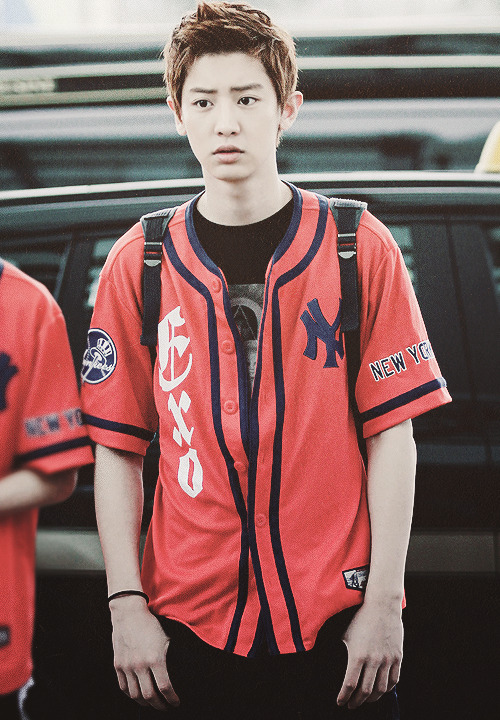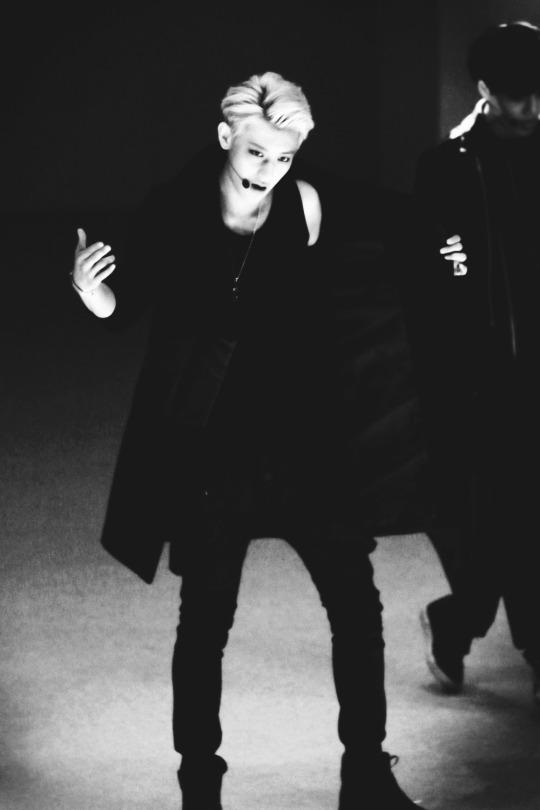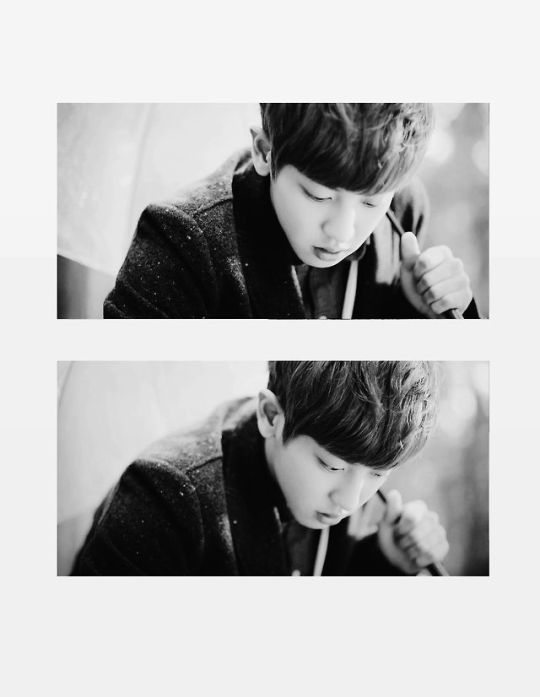"who ever stops to think that this time could be the last?" Writing Blog | VIXX Haven | Leotte
Don't wanna be here? Send us removal request.
Text
NieR: Automata Ought to Matter
And not just because of my horribly cheesy puns. Do a quick check on the internet - some reviews on Metacritic, a few YouTube videos - and you’ll get the impression that a lot of people were taken aback by the quality of the game. NieR, the original game released in April of 2010, didn’t do so well. It gained a cult following for a handful of reasons that I’ll address later, but the overall consensus suggested that the game wasn’t anything special. Poor combat, lacking visuals and repetition were the most commonly cited problems from review outlets such as IGN and Kotaku. Then along comes an announcement from Square Enix that NieR was in for a sequel and everyone was just a little bemused.
I say all this without having had the benefit of first hand experience. I was an initiate to Yoko Taro when I first plunged into NieR: Automata. Like a lot of others, I picked up the game on the assurances that followed reviews of the sequel. This one was different, they said. Different in a lot of ways. And one of the reasons for that was Platinum games.
Platinum. The studio that focused on action combat games like Bayonetta. Their combat systems sought to provide fun and entertainment, with enough depth for gamers to sink their teeth into should they wish to really understand the mechanics. Their previous games received rave reviews (well… let's forget that one Teenage Mutant Ninja Turtles title. Everyone tries to) so naturally, interest had sparked in their new collaboration before it was even released. Whilst the team up ultimately paid off, there was a sense of trepidation towards the other party.
Here’s where things start to get a little more… different. So you have a studio known for their excellent combat and a game director whose previous game in the same series was criticised for having dull combat. You’ve got the one thing needed to plug up the leak in an otherwise study ship right? All fine, except that ship is steered by Yoko Taro, and this captain likes sailing over rocks just to see how much damage he can do. Damage, in this sense, would be the emotional kind. NieR: Automata thankfully doesn’t suffer at all for Taro’s tendency to go off the map. In fact, that’s when it flourishes. Platinum games provide the base for which a story can be built, in which everything weaves around it perfectly.
When Yoko Taro spoke at the 2014 Games Developers Conference, he made a point of how he writes his stories: “Backwards script writing and photo thinking” he calls them. Backwards scriptwriting is just as it sounds. “It’s the process of creating cause of reason starting with the conclusion of the story.”
I must admit, this resonated with me as a writer. Often, I’ve had people ask me how I create characters or build plots. I always refer to it as a snowball effect. In my head, I begin with one point; a name, a personality trait or a scene. Then I start filling in the blanks. It’s never a conscious process. I hardly ask myself “I wonder what this character was doing when she was three years old?” or “What plot shall we add in order to give her character motivation?” As the ideas snowball, the answers to the questions follow. It tumbles down the hill picking up more snow as it goes.
In essence, this is what I felt when playing NieR: Automata for the first time, and later hearing Taro’s methodology, even with Taro snowballing from the ending. Everything comes together in such a way that when it does fly off the course you were expecting it to take, it still keeps going. It never feels outside the realm of the world you’ve created because everything serves the purpose of reinforcing that world and the characters.
Automata is a game that relies heavily on its characters. It’s world made be ruined, but the characters give it life. 2B and 9S, our initial protagonists, are introduced in the norms: on a mission. And it’s here that Platinum starts showing off its effortless play style. “B fights with class. Even as a beginner, you can tell you have in your hands a seasoned pro. She leaps with a grace and style that should be impossible in the high heels she’s wearing. But we don’t question it. By the end of the prologue, your heart is in your mouth thinking “They can’t possibly die like this?” as they detonate these black boxes they hold in order to complete their mission. But then, not a few seconds later, there they both stand. This tells us two things: one, the mission is above all else. And two, they are artificial. Man-made.
It’s then that everything starts tying into this. The upgrade system: a series of plug-in chips that can be collected, then inserted into your friendly androids for a variety of perks and benefits. The quick travel system, which has your body being stored and reassembled at the new location, your consciousness data being transferred. And the death and retrieval system. You want all your plugin chips after dying? No easy way around it. Go back to the site of your death to find your old battered body, and loot them from your corpse.
It’s a morbid system perhaps, one that other games like Darksouls have used in the past. And whilst Automata isn’t trying to go all Bloodborne on you, it does use these systems to enhance its story. Death isn’t something that just causes a restart. You lose yourself every time. A body is left in the place you failed and you must revisit it in order to gain what you lost. Wonderfully poetic, but also practically in Yoko Taro’s android driven world. If you fail to backup your data to the androids’ main base of operations, the Bunker, you’ll lose all of your data when you do die. Everything, and I mean everything, ties into the logic of this world. It makes it so tangibly real that you can't help but begin to care for these characters.
Who doesn’t play a game wanting the heroes to succeed? There are few exceptions, but Automata goes a step further. In another method of driving home what these androids go through, Taro makes you play the game again. NieR did this of course. To unlock certain endings, various different story requirements are met, and various perspectives need to be seen. Playing the first route of Automata alone is like only eating the crusts off a slice of pizza. You’re only getting the base, not the main sauce and cheese of the story.
But then, I hear you cry, why should someone have to play a game twice (theoretically) to get the most out of the content? Why should it be necessary to look deeper into the story when we get a basic, albeit thought-provoking story in the first route? Let me introduce to you, my dear friend, route B. A simple character perspective switch as it first seems. You’ll notice something upon starting up 9S’s story that you can’t believe you missed before when you first booted up the game: this is the first time we get a title screen. To me, this subconsciously marked the beginning of the real story. We’d just made our way through a ten-hour long prologue. And what Taro and his team do in this playthrough is subtle enough that you don’t think too much about it. The gameplay is once again changed, giving you wider tactical options and a little more access to loot the world now that you know the basic layout. Everything seems normal until you hit the desert area.
The strange cardboard style intermission appears on the screen and for a minute, you’re thrown for a loop. What was that? What relevance does it have to the story at all? So you think about it. And think about it more. Until another reveal comes later on when you reach another new area, and then 9S’s hacking abilities start revealing the inner workings of the supposedly evil machines you’re fighting.
I’m not suggesting that this dual perspective narrative is something that hasn’t been seen before - spoiler warning, that’s exactly how the first NieR game pulled its emotional punches - but it’s the way it’s implemented here that causes the new insights to slowly worm their way under your skin and unsettle you. Taro is setting you up for a fall and getting you through a largely similar playthrough with a breadcrumb trail of promises. “Hey, if you play some more, this might all start to make sense.”
It does, eventually. But only after the player embarks on their third playthrough and- hang on, aren’t we going back to the start? The repetition of the previous two acts lulls you into a false sense of security. 2B’s narration at the very beginning of the game sets you up to think there’s going to be more of the same; “We are perpetually trapped in a never-ending cycle of life and death.” Taro just straight up breaks the rule that is an established feature in video games: a new playthrough is a repeat of the game. Now the game continues, and whilst there are many more shocks to come, 9S has to deal with most of them. The perspective shift seen before becomes a protagonist shift.
I love Automata for doing this. The player has spent so much time with 2B, seen her as the face (yes, face) of the game that losing her is as shocking to us as it is to 9S. It’s expected, but that doesn’t make it any less unbelievable when it does happen. I would argue here that 9S is the main protagonist of the whole game. We see his journey from small sidekick to emotionally broken crusader, fighting for revenge. He’s the smarter one, the one who figures it all out. Yet he can’t handle losing 2B and losing his purpose soon after. He snowballs, just like I would with a story. But his snowball is more the kind that breaks windows then ends up being the base of a snowman.
Two things become apparent from these later acts of Automata’s story. Firstly, Taro knows how attached he wants you to feel to these characters. You could almost say he’s being emotionally manipulative. The false sense of security is ripped away from the player after their two repetitions of the same story, thus the second half of the game feels off the rails and unpredictable even when we can guess what will happen next. Secondly, the story is no less at the forefront of the game's design. You could go as far as to say that the story is one of the main designs of the game. Critics and creators often keep these things separate, the story a secondary thought to the game's mechanics, weaving it around what already exists to hold it loosely together. But Automata’s story defines so many of its gameplay mechanics that it is equally important. The features that run from the early gameplay - the death system or plug-in chips - continue throughout, and then the game uses the multiple playthrough concepts, one which is usually just a shallow attempt at extending gameplay hours, to enhance the story.
The truth is, we don’t see enough of these games anymore. This year's releases have placed a much greater importance on the open world exploration style of gameplay we’ve seen in older RPG’s. Games such as The Legend of Zelda: Breath of the Wild, Horizon: Zero Dawn and Skyrim (which is still being newly released on systems even six years after it’s initial launch) all have good stories. But they aren’t tied into the gameplay as much as NieR: Automata threads it’s narrative into every aspect of the game. Nintendo has shared their philosophy on making great games time and time again. They begin with a fundamental “clear concept and then do as much with that concept as the time will allow” according to Zelda creator Shigeru Miyamoto. And this works brilliantly. There’s no way to say with is better: putting story first, or gameplay first. But what Yoko Taro does is fundamentally the same as Miyamoto states. Instead of taking a gameplay concept and making it the key to the game, with Taro it’s the narrative concept. Though we do not know the exact scene that sparked Automata’s story like we do with NieR’s, suffice to say it would have involved androids, or if we want to get a tad more specific, mechanical lifeforms fighting each other in an attempt to understand life.
Because underneath all the swerves in narrative, the protagonist changes and the lolita dressed androids, there is always that philosophy that 2B starts out with. What is life? And why is an android talking of life if they aren’t considered living beings? NieR: Automata doesn’t allow you to create your own story out of your experiences (though this is very much possible in some of the more open areas of the game), but invites you to question it alongside the main characters. Games are such a unique platform for telling stories and NieR: Automata should be applauded for the risks it takes in its narrative brutality and refusal to treat gameplay and story as two different entities. We need more games that are willing to take risks with the stories they want to tell, and in particular, ones that put so much detail and care into the presentation as they can. Yoko Taro and Platinum games marry together narrative and gameplay in an intrinsic way that gives NieR: Automata its identity. In a landscape of the world, make-your-own-story games, Automata shows why a linear story can still be relevant, and how games are the perfect medium to tell stories that can’t be told through anything else.
And that’s why Automata ought to matter.
Yoko Taro: Making Weird Games for Weird People - https://www.gdcvault.com/play/1020815/Making-Weird-Games-for-Weird
#s; vague hope#nier automata#rambling about automata and trying to sound semi professional#it's not working#sorry people in the tags.
0 notes
Text
Awake and Make Believing
Part I (of ?) - For Vanihopu day
None of it was real. It was all his own creation, something he hadn't realised he wanted until he opened his eyes each morning to find she had disappeared. She had been a dream, nothing more.
Setting: End of FFXIII-2
Characters: Hope Estheim, Oerba Dia Vanille
Keep reading
30 notes
·
View notes
Photo
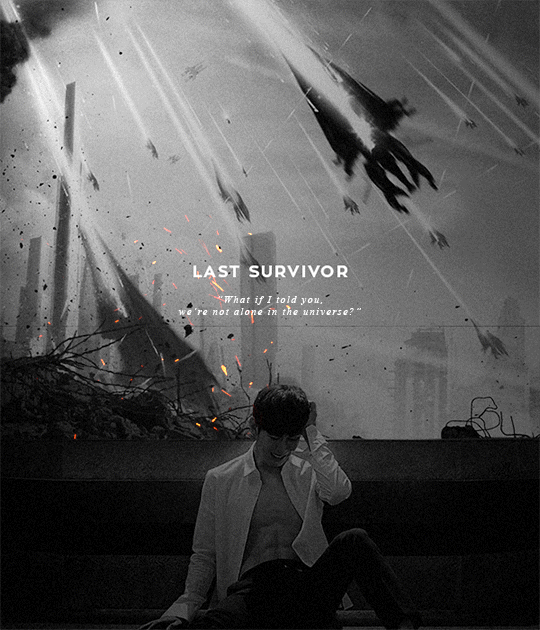
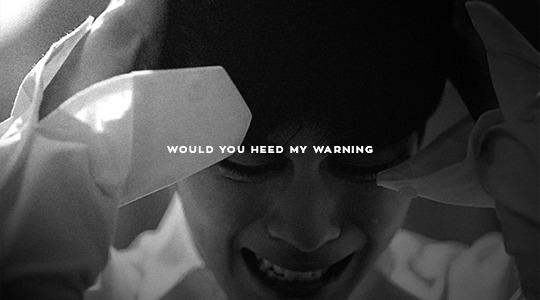
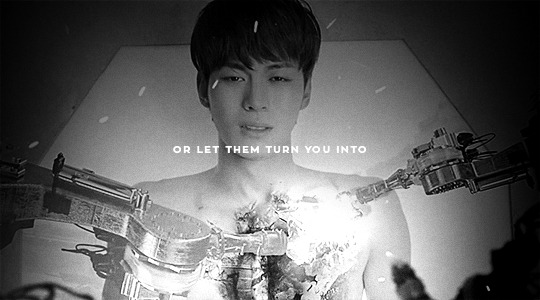
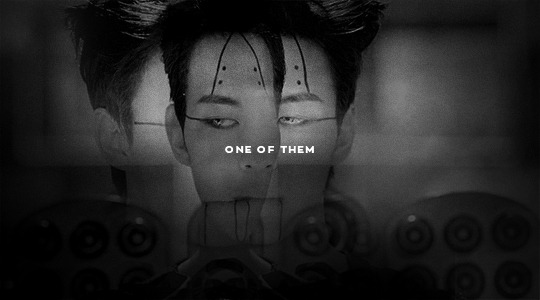
VIXX Dark edits: Hongbin ---- au where Earth is attacked by an ancient race of sentient machines (aka Mass Effect au)
130 notes
·
View notes
Photo


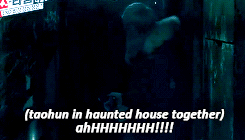
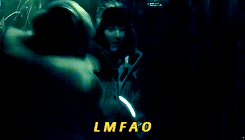

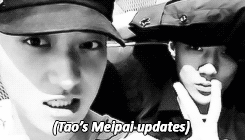
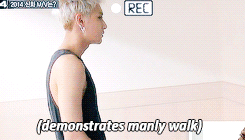
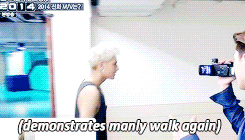
"When he is with me, he is really funny. Whenever I get stressed, if I tell Sehun, my stress gets relieved. We fool around a lot. Whatever we do, if we do it together, I feel good. When I’m with him, there is no stress." Tao about Sehun (28 June 2013) ©
8K notes
·
View notes
Photo
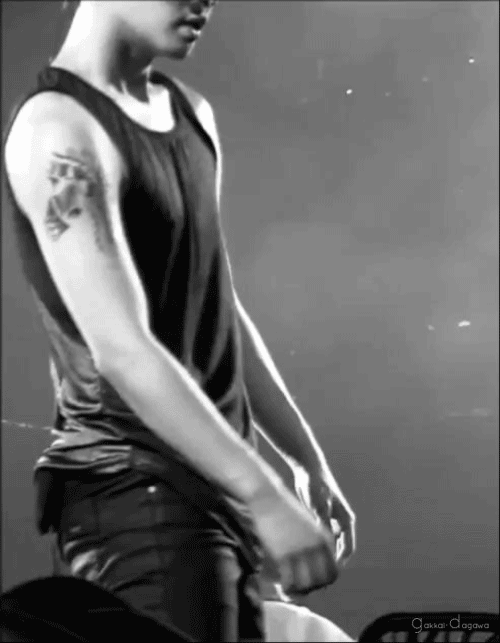
6K notes
·
View notes
Photo
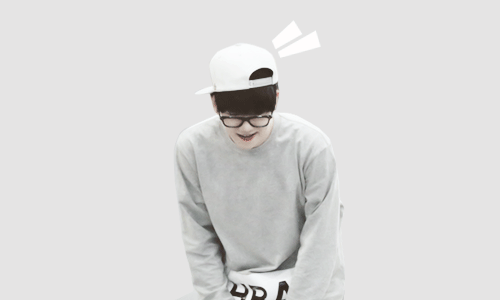


baekhyun + glasses + lovely smile = perfection
16K notes
·
View notes
Photo
kyungsoo leaning his head on chanyeol’s shoulder (ft. jealous kai)

343 notes
·
View notes
Text
Despite that fact that I could not understand a word, watching the Kyungsoo cut from the first episode has made me move into a desperate state of longing for an eng sub T_T
#it's okay it's love#d.o#kyungsoo#exo#he was so freaking cute#though that scene in the bathroom...#I giggled way too much and in a far too girly way#keeley talks
2 notes
·
View notes


